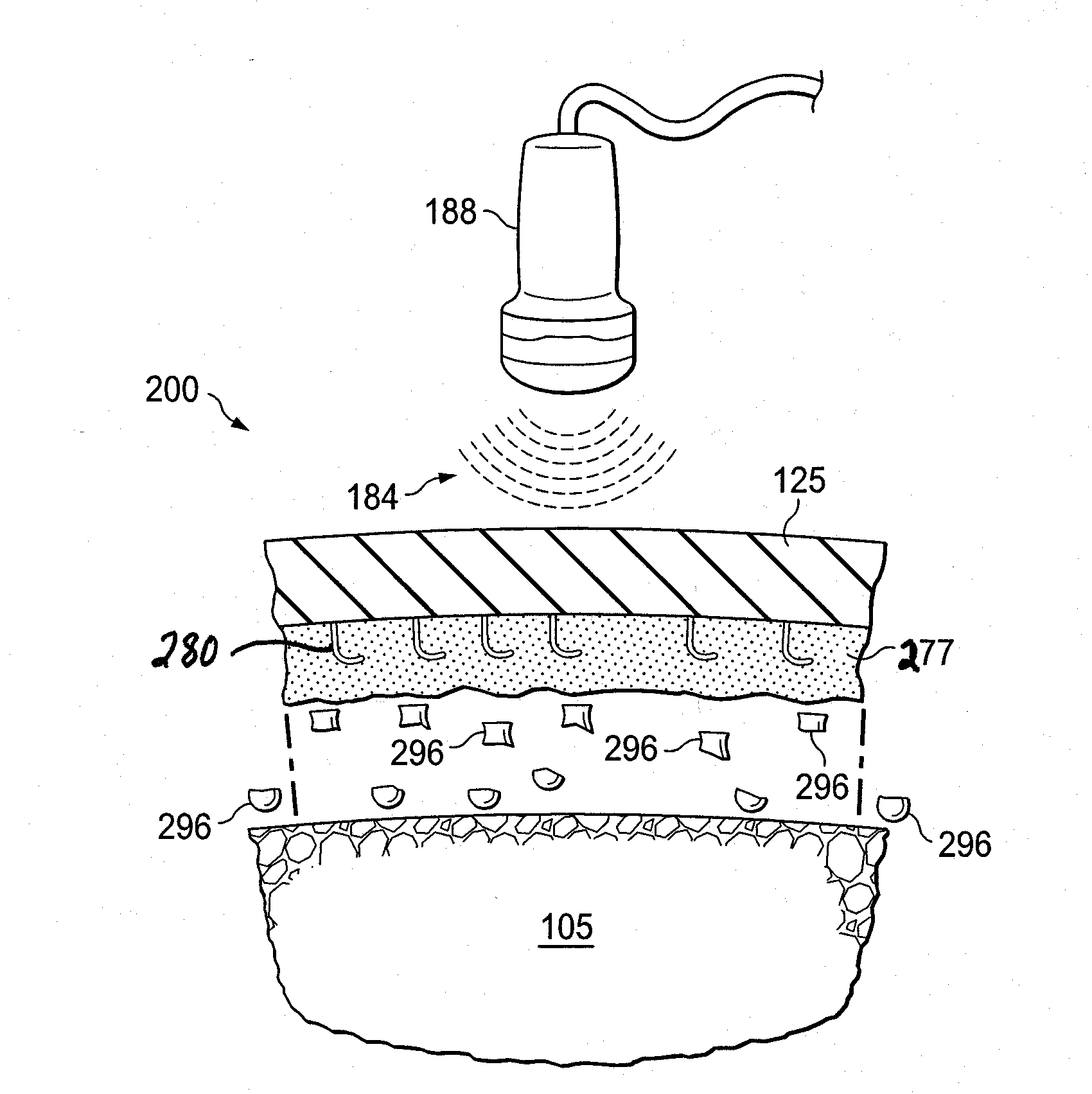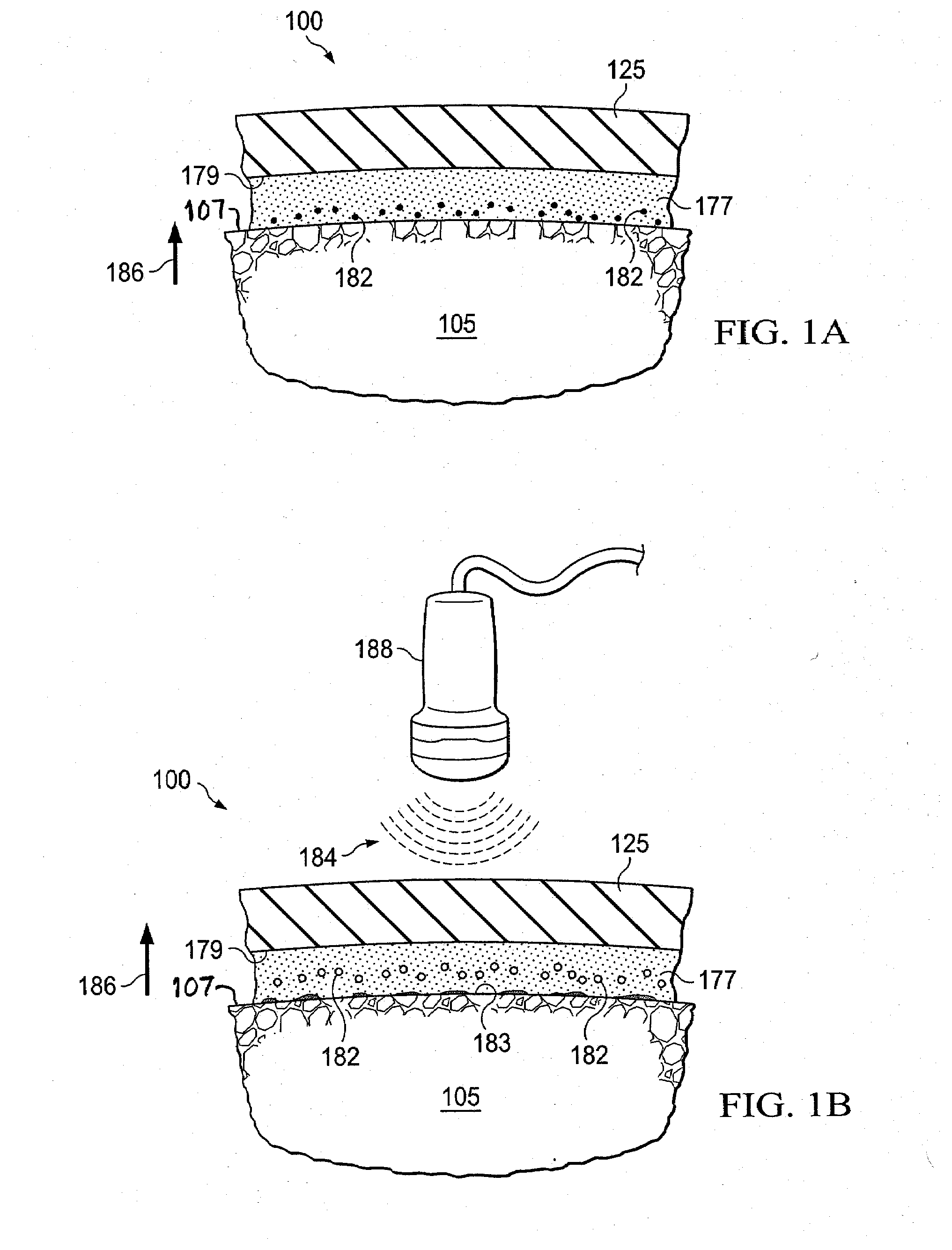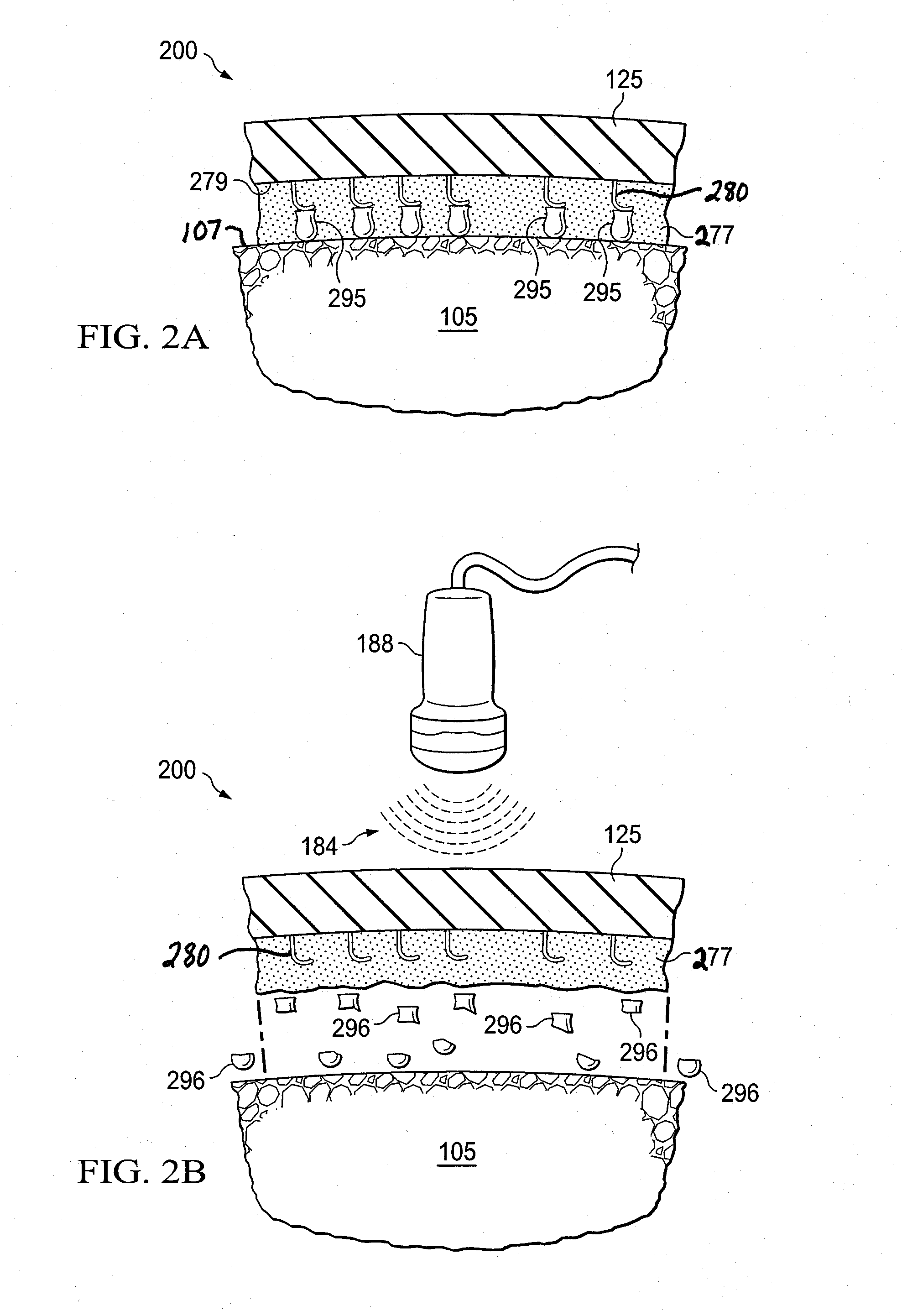System and method for healing a wound at a tissue site
a tissue site and system technology, applied in the field of tissue treatment, can solve the problems of pain or discomfort of patients, stress being applied to the skin or other tissue at the tissue site, damage to the tissue site, etc., and achieve the effect of reducing pressur
- Summary
- Abstract
- Description
- Claims
- Application Information
AI Technical Summary
Benefits of technology
Problems solved by technology
Method used
Image
Examples
example 1
[0142]A 7×7 cm piece of Avery V.A.C.® Therapy Drape was placed on a forearm (specimen 1). The force required to remove the drape 125 was measured by an instron.
[0143]A second piece of 7×7 cm drape 125 was placed on the opposite forearm (specimen 2). For this sample, 71.9 mg of jojoba liposomes (Florasomes from Floratech) were placed on the adhesive side of the drape prior to adhering to the forearm. Florasomes liposomes containing about 10% tocopherol (i.e., vitamin E); having a size of about 300 to about 1700 microns; and having an initial melting point of about 50 C. The drape was heated slightly by holding the opposite hand on the dressing for 1 minute. This dressing was attached to the instron and the force required to remove the drape was measured.
[0144]Results showed that specimen 1 required a maximum load of 2.44 N to remove. Specimen 2 required a maximum load of 1.48 N to remove. The liposomes slightly reduced maximum load to remove the drape in the absence of heat but such ...
PUM
| Property | Measurement | Unit |
|---|---|---|
| thickness | aaaaa | aaaaa |
| thickness | aaaaa | aaaaa |
| thickness | aaaaa | aaaaa |
Abstract
Description
Claims
Application Information
 Login to View More
Login to View More - R&D
- Intellectual Property
- Life Sciences
- Materials
- Tech Scout
- Unparalleled Data Quality
- Higher Quality Content
- 60% Fewer Hallucinations
Browse by: Latest US Patents, China's latest patents, Technical Efficacy Thesaurus, Application Domain, Technology Topic, Popular Technical Reports.
© 2025 PatSnap. All rights reserved.Legal|Privacy policy|Modern Slavery Act Transparency Statement|Sitemap|About US| Contact US: help@patsnap.com



